It looks like you're using an Ad Blocker.
Please white-list or disable AboveTopSecret.com in your ad-blocking tool.
Thank you.
Some features of ATS will be disabled while you continue to use an ad-blocker.
share:
A comment:
I have a sherd jar in which I have a modest collection of pottery shards from about 40 cultures and civilizations, all found in surface finds in various disturbed sites that were then destroyed (usually by being built over).
If I were to take a handful of these and spread them around Bolivia and someone found them could this then be proof that the people who made Bandkeramik, Minoan New Palace Style, or Umm an-Nar ceramic were in Bolivia?
Context, Provenance and Provenience
I have a sherd jar in which I have a modest collection of pottery shards from about 40 cultures and civilizations, all found in surface finds in various disturbed sites that were then destroyed (usually by being built over).
If I were to take a handful of these and spread them around Bolivia and someone found them could this then be proof that the people who made Bandkeramik, Minoan New Palace Style, or Umm an-Nar ceramic were in Bolivia?
Context, Provenance and Provenience
Good thread as usual Kantzveldt,the bowl do look impressive however I am uneasy with the fact it's a stand alone and is found in a land locked
mountain nation,I am not sure how you guys feel about Dr Barry Fell's works he is after all a hyper diffusionist ,the following may not fit into the
Fuente Magna Bowl which is dated much later.
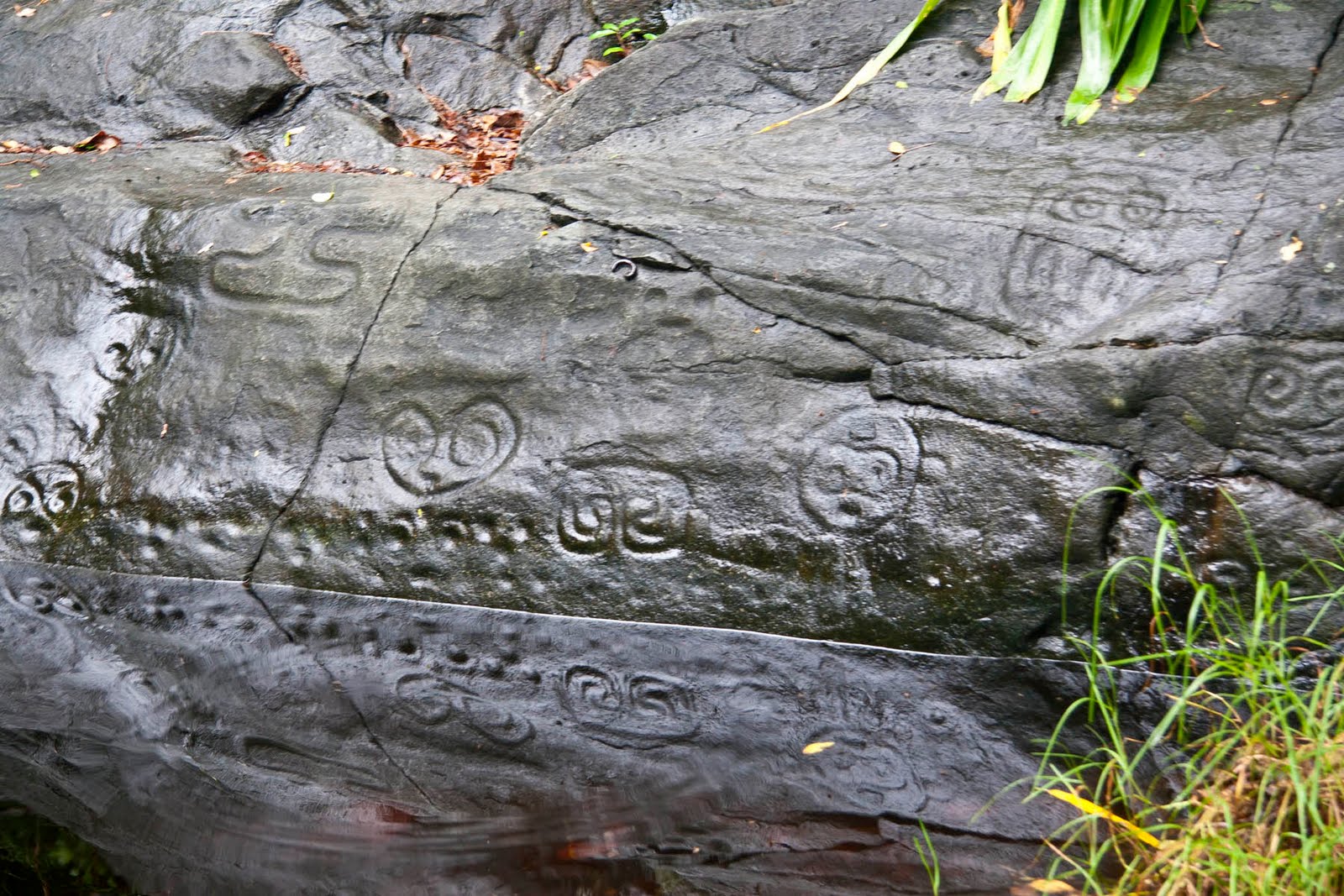
Dr. Barry Fell, used Tifinag a Saharan Libyan script to translate the above
www.stjohnbeachguide.com...
Now on another Virgin Island were to be found two male skeletons by the Smithsonian Institute of possible non Native American origins but found in a preColombian strata .
Observer Reporter Feb 24 1975
news.google.com...
You will have to scroll down it's on Page 5 0f 42.
I am trying to find out if there was a lingering on and off tradition of contacts with the new old world,especially those seafaring communities such as the Punic which also have Laventine North African and Saharan links.

Dr. Barry Fell, used Tifinag a Saharan Libyan script to translate the above
According to Dr. Fell the petroglyphs are “script reflected and inverted in the mirror of the water” and would be translated into Modern English as “Plunge in to cleanse and dissolve away impurity and trouble; this is water for ritual ablution before devotions.”
www.stjohnbeachguide.com...
Now on another Virgin Island were to be found two male skeletons by the Smithsonian Institute of possible non Native American origins but found in a preColombian strata .
Observer Reporter Feb 24 1975
news.google.com...
You will have to scroll down it's on Page 5 0f 42.
I am trying to find out if there was a lingering on and off tradition of contacts with the new old world,especially those seafaring communities such as the Punic which also have Laventine North African and Saharan links.
edit on 23-6-2014 by Spider879 because: fix
a reply to: Spider879
Fells was a zoologist who was noted for making errant "translations"
One quote about him by Kelley
"Fell's work [contains] major academic sins, the three worst being distortion of data, inadequate acknowledgment of predecessors, and lack of presentation of alternative views."
Fells was a zoologist who was noted for making errant "translations"
One quote about him by Kelley
"Fell's work [contains] major academic sins, the three worst being distortion of data, inadequate acknowledgment of predecessors, and lack of presentation of alternative views."
originally posted by: Hanslune
a reply to: Spider879
Fells was a zoologist who was noted for making errant "translations"
One quote about him by Kelley
"Fell's work [contains] major academic sins, the three worst being distortion of data, inadequate acknowledgment of predecessors, and lack of presentation of alternative views."
Well there goes that petroglyph connection,I was sorta Leary about him anyways, he was all over the place,I tried to find if there was any genetic studies done by the Smithsonian on the two skeletons but came up empty,all they had was bones which although titillating is not enough to go by.
edit on 23-6-2014 by Spider879 because: (no reason given)
a reply to: Harte
When they say known to all men that only seems to include Phoenicians, or at least not to potential aggressors.
When they say known to all men that only seems to include Phoenicians, or at least not to potential aggressors.
The Phoenicians, then, while exploring the coast outside the Pillars for the reasons we have stated and while sailing along the shore of Libya, were driven by strong winds a great distance out into the ocean. And after being storm-tossed for many days they were carried ashore on the island we mentioned above, and when they had observed its felicity and nature they caused it to be known to all men. Consequently the Tyrrhenians, at the time when they were masters of the sea, purposed to dispatch a colony to it; but the Carthaginians prevented their doing so, partly out of concern lest many inhabitants of Carthage should remove there because of the excellence of the island, and partly in order to have ready in it a place in which to seek refuge against an incalculable turn of fortune, in case some total disaster should overtake Carthage. For it was their thought that, since they were masters of the sea, they would thus be able to move, households and all, to an island which was unknown to their conquerors
a reply to: Blackmarketeer
The coin thing does seem silly, but i'm not saying i agree with any of their considerations i only linked to them in order to give general insight for what is claimed as evidence for Phoenicians in the Americas, i'm not attempting to make their case as i consider it all very sketchy to say the least, they may have chanced upon the Azores, there was a cache of Carthaginian coins discovered there allegedly and that would put them around half way there.
a reply to: Spider879
Those are the adorable Amazonian Frog Gods, there's an example seen at Tiwanaku in the assorted Head Deity collection of the various pilgrims, some say it's a grey alien
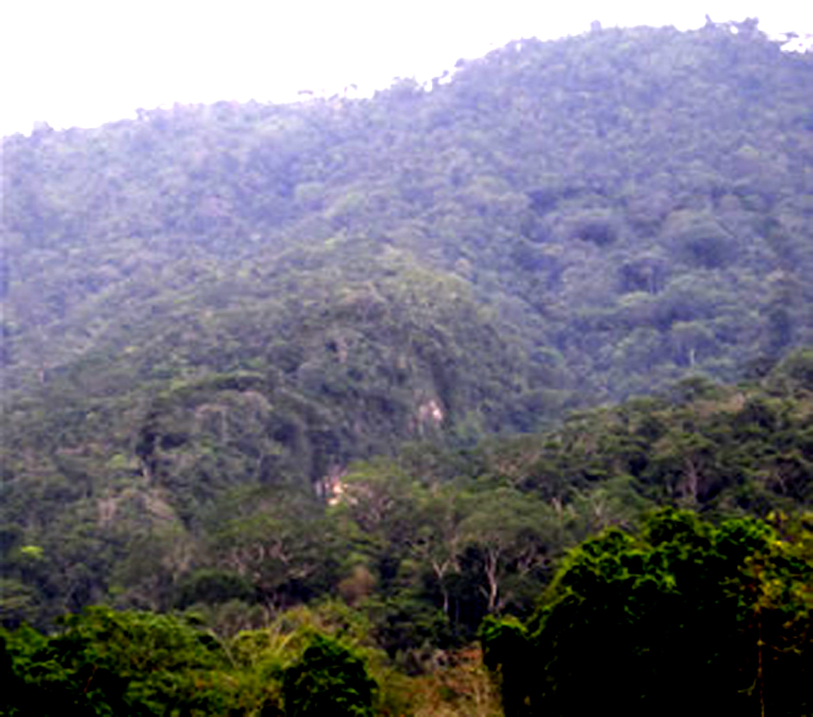
Geoglyphs of Madre de Dios
But you have intrigued me now because the Frog Gods have association with Labyrinth type motifs similar to those seen on the bowl;
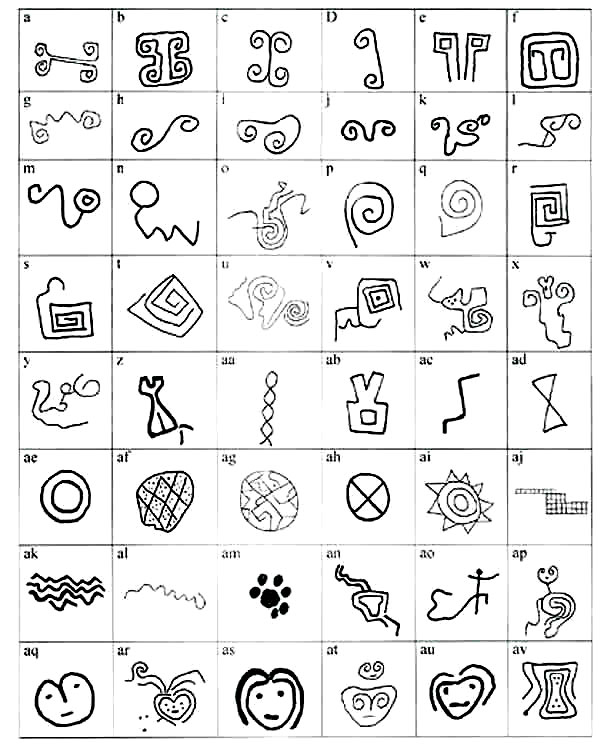
Treasure hunters considered some of their petroglyphs as indicating a lost city, perhaps full of gold, but maybe it is a Labyrinth.

The coin thing does seem silly, but i'm not saying i agree with any of their considerations i only linked to them in order to give general insight for what is claimed as evidence for Phoenicians in the Americas, i'm not attempting to make their case as i consider it all very sketchy to say the least, they may have chanced upon the Azores, there was a cache of Carthaginian coins discovered there allegedly and that would put them around half way there.
a reply to: Spider879
Those are the adorable Amazonian Frog Gods, there's an example seen at Tiwanaku in the assorted Head Deity collection of the various pilgrims, some say it's a grey alien

Geoglyphs of Madre de Dios
But you have intrigued me now because the Frog Gods have association with Labyrinth type motifs similar to those seen on the bowl;

Treasure hunters considered some of their petroglyphs as indicating a lost city, perhaps full of gold, but maybe it is a Labyrinth.

edit on Kam630173vAmerica/ChicagoMonday2330 by Kantzveldt because: (no reason given)
a reply to: Kantzveldt
Wow I completely missed that post,plus I had not seen the frog's head glyphs of the amazon before truly amazing think there is a cultural line linking the Amazon to the Caribbean after all both the Taino and their Carib oppressors originated on the banks of that mighty river,in anycase the Taino were on the Virgin Islands first

Can you find any other probable links to the Amazon?? what about those dots anything similar came to mind.
Btw about the skeletal remains here is a study done on them.
Analysis Of The Hull's Bay Skeletons St Thomas
Bio-anthropologist
Larry Angel
Douglas H Ubelaker
stcroixarchaeology.org...
Wow I completely missed that post,plus I had not seen the frog's head glyphs of the amazon before truly amazing think there is a cultural line linking the Amazon to the Caribbean after all both the Taino and their Carib oppressors originated on the banks of that mighty river,in anycase the Taino were on the Virgin Islands first

Can you find any other probable links to the Amazon?? what about those dots anything similar came to mind.
Btw about the skeletal remains here is a study done on them.
Analysis Of The Hull's Bay Skeletons St Thomas
Bio-anthropologist
Larry Angel
Douglas H Ubelaker
stcroixarchaeology.org...
a reply to: Spider879
You can determine if skeletons (if not overly degraded) are from the local area or where the person grew up based on traces. Take a look at Bioarchaeology and Stable isotope analysis for an idea of what can and cannot be done.
You can determine if skeletons (if not overly degraded) are from the local area or where the person grew up based on traces. Take a look at Bioarchaeology and Stable isotope analysis for an idea of what can and cannot be done.
edit on 23/6/14 by Hanslune because: Corrected
wordage
originally posted by: Hanslune
a reply to: Spider879
You can determine if skeletons (if not overly degraded) are from the local area or where the person grew up based on traces. Take a look at Bioarchaeology and Stable isotope analysis for an idea of what can and cannot be done.
Well that's what they are implying that contamination by seawater cannot be ruled out,however no post Colombian artifacts were found at the site,so far what we have is a grave site dating 1250 A.D with two apparently non native Americans of probable African origin one wearing a Pre-Colombian clay vessel around his wrist dating 950-1250 A.D I think the ball is on the rim on this one but it's not a slam dunk I think it's time to take another look at this it's been 40yrs now I think the science is there to see if it's a hit or miss.
edit on 23-6-2014 by Spider879 because: (no reason
given)
a reply to: Spider879
I think the little Frog God would have been common to most cultures of the tropical forests of the Americas, certainly found in Ecuador in Manteno Culture. If one looks at the Madre de Dios petroglyphs the labyrinth type motifs seem to also have association with the internal organs of the body, and there is correlation there between Mesopotamia, were the internal organs were associated with visionary dream state as in the tale Humbaba
The labyrinth also had association with reptillians and amphibians, crocodiles, dragons and frogs, we see all of these on the bowl if we take the birth Goddess and her frog like positioning, they represented an intermediate stage of Creation, the transition from water to land, but were also related to intermediate states of consciousness, and thus had shamanic associations, particularly with hallucinogenic frog Gods of the Amazon, but the Egyptian Labyrinth had these same associations, and the place of internal complexity was also understood as having a Heavenly counterpart in the form of the Pegasus square.
For these reasons there would be association with ritual, and perhaps those dots give guidance to the frequency of these. Some of the motifs also look like fallopian tubes thus consideration of the internal logistics of giving birth and the relationship to a Goddess of such, particularly seen in Ecuador.
I think the little Frog God would have been common to most cultures of the tropical forests of the Americas, certainly found in Ecuador in Manteno Culture. If one looks at the Madre de Dios petroglyphs the labyrinth type motifs seem to also have association with the internal organs of the body, and there is correlation there between Mesopotamia, were the internal organs were associated with visionary dream state as in the tale Humbaba
The labyrinth also had association with reptillians and amphibians, crocodiles, dragons and frogs, we see all of these on the bowl if we take the birth Goddess and her frog like positioning, they represented an intermediate stage of Creation, the transition from water to land, but were also related to intermediate states of consciousness, and thus had shamanic associations, particularly with hallucinogenic frog Gods of the Amazon, but the Egyptian Labyrinth had these same associations, and the place of internal complexity was also understood as having a Heavenly counterpart in the form of the Pegasus square.
For these reasons there would be association with ritual, and perhaps those dots give guidance to the frequency of these. Some of the motifs also look like fallopian tubes thus consideration of the internal logistics of giving birth and the relationship to a Goddess of such, particularly seen in Ecuador.
edit on Kam630173vAmerica/ChicagoMonday2330 by Kantzveldt because: (no reason given)
Kantz, there is another factor to regard:
The cuneiform script was not carried by Phoenicians into their westward expansions. The furthest west any cuneiform script has been found is on the island of Malta, the script (Sumerian) is considered to have been looted from Ur and carried there by Cypriot or Mycenaean merchants.
Around 1200 BCE, the spread of the Sea Peoples led to the demise of several Mediterranean kingdoms, and alphabetic cuneiform disappeared completely (earlier forms of cuneiform had already died out). This led to the development of linear alphabetic writing, with the Phoenician script developing about 1100 BCE. Phoenician script spread westward as they did, to Sardinia, Carthage, southern Spain (Gadia/Cadiz). Their presence in these colonies is not marked by the more primitive cuneiform writing, but by linear alphabetic writing. To the best of my knowledge, not once has any Phoenician cuneiform writing turned up in any of their westward possessions. The Phoenician alphabet had actually developed much earlier, around the 16th C. BCE.
This raises too many unlikely scenarios:
1. Phoenicians arrived in the Americas early enough in their history, when they were still using cuneiform writing. (Which begs the question, why would they skip so much prime territory in the western Med that was ripe for settlement?)
2. They arrived in the Americas after settling their N. African, and Iberian colonies, and this was the next hop westward. (Which begs the question, why would they revert to the more primitive and long dead cuneiform script?)
3. Why, having established colonies in the western Med, even reaching the British Islands, have no examples of cuneiform script been found at these locations? (The answer, simply put, is they had long ago stopped using it.)
I'll leave it at that, sadly the bowl has no provenance, it's presence in Bolivia may have come by any means, ancient or modern. I for one would not view it as a sign of Phoenician presence in Bolivia.
The cuneiform script was not carried by Phoenicians into their westward expansions. The furthest west any cuneiform script has been found is on the island of Malta, the script (Sumerian) is considered to have been looted from Ur and carried there by Cypriot or Mycenaean merchants.
Around 1200 BCE, the spread of the Sea Peoples led to the demise of several Mediterranean kingdoms, and alphabetic cuneiform disappeared completely (earlier forms of cuneiform had already died out). This led to the development of linear alphabetic writing, with the Phoenician script developing about 1100 BCE. Phoenician script spread westward as they did, to Sardinia, Carthage, southern Spain (Gadia/Cadiz). Their presence in these colonies is not marked by the more primitive cuneiform writing, but by linear alphabetic writing. To the best of my knowledge, not once has any Phoenician cuneiform writing turned up in any of their westward possessions. The Phoenician alphabet had actually developed much earlier, around the 16th C. BCE.
This raises too many unlikely scenarios:
1. Phoenicians arrived in the Americas early enough in their history, when they were still using cuneiform writing. (Which begs the question, why would they skip so much prime territory in the western Med that was ripe for settlement?)
2. They arrived in the Americas after settling their N. African, and Iberian colonies, and this was the next hop westward. (Which begs the question, why would they revert to the more primitive and long dead cuneiform script?)
3. Why, having established colonies in the western Med, even reaching the British Islands, have no examples of cuneiform script been found at these locations? (The answer, simply put, is they had long ago stopped using it.)
I'll leave it at that, sadly the bowl has no provenance, it's presence in Bolivia may have come by any means, ancient or modern. I for one would not view it as a sign of Phoenician presence in Bolivia.
originally posted by: Spider879
originally posted by: Hanslune
a reply to: Spider879
You can determine if skeletons (if not overly degraded) are from the local area or where the person grew up based on traces. Take a look at Bioarchaeology and Stable isotope analysis for an idea of what can and cannot be done.
Well that's what they are implying that contamination by seawater cannot be ruled out,however no post Colombian artifacts were found at the site,so far what we have is a grave site dating 1250 A.D with two apparently non native Americans of probable African origin one wearing a Pre-Colombian clay vessel around his wrist dating 950-1250 A.D
You have the association slightly wrong so I have copied the relevant part

The pottery was not around his wrist
You would need to see the diagram and drawings of the site to determine exactly what the relationship was
In cases like this the best option would be to re examine the material with modern techniques. You might want to see if it has been already re-examined previously.
Ubelaker the lead author on that paper is still working in the field I sent you a PM with his contact details, ask him and let us know what he says about those skeletons.
edit on 24/6/14 by Hanslune because: (no reason given)
originally posted by: Hanslune
originally posted by: Spider879
originally posted by: Hanslune
a reply to: Spider879
You can determine if skeletons (if not overly degraded) are from the local area or where the person grew up based on traces. Take a look at Bioarchaeology and Stable isotope analysis for an idea of what can and cannot be done.
Well that's what they are implying that contamination by seawater cannot be ruled out,however no post Colombian artifacts were found at the site,so far what we have is a grave site dating 1250 A.D with two apparently non native Americans of probable African origin one wearing a Pre-Colombian clay vessel around his wrist dating 950-1250 A.D
You have the association slightly wrong so I have copied the relevant part
The pottery was not around his wrist
You would need to see the diagram and drawings of the site to determine exactly what the relationship was
In cases like this the best option would be to re examine the material with modern techniques. You might want to see if it has been already re-examined previously.
Ubelaker the lead author on that paper is still working in the field I sent you a PM with his contact details, ask him and let us know what he says about those skeletons.
Thank you very much scholar.
O Btw I came to find out that other similar burials involving non Native Americans of African?? extraction but buried Native American style with the vessel exist on other Islands although no date was given and there was a suggestion given to reevaluate impervious dates
he Virgin Islands Daily News - Oct 21, 1974
This find indicate the need for reinterpretation of Negroid burials previously reported from aboriginal sites in the Virgin Islands. in the case of burial ground discovered on Water Island 38 years ago,with the same kind of pottery as at Hull's Bay was associated with Negroid remains.Other less well documented finds of a similar nature are known from St Johns and St Croix as well
news.google.com...
edit on 24-6-2014 by
Spider879 because: (no reason given)
originally posted by: Hanslune
a reply to: Spider879
You linked to a 12 page newspaper, can you be more specific where it is I cannot search it easily with my IPad.
also we made be going a bit off topic
It's on page 4 of the newspaper, which Google calls page 3.
It continues on the last page.
Harte
edit on 6/24/2014 by Harte because: (no reason given)
a reply to: Spider879
a reply to: Hanslune
The article begins on page 3 and continues on page 23 in spider's link.
It reports that 'prehistoric' remains were found dating to around 100 AD, and appear to be a 'hybrid' of races - Native Indian and African Negroid.
Here's a screen cap of Spider's find:
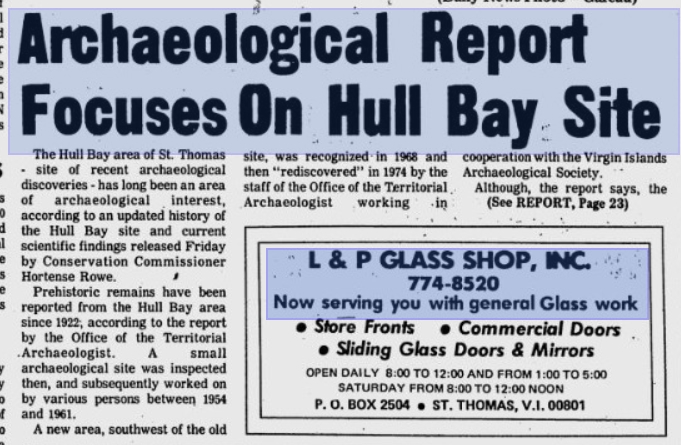
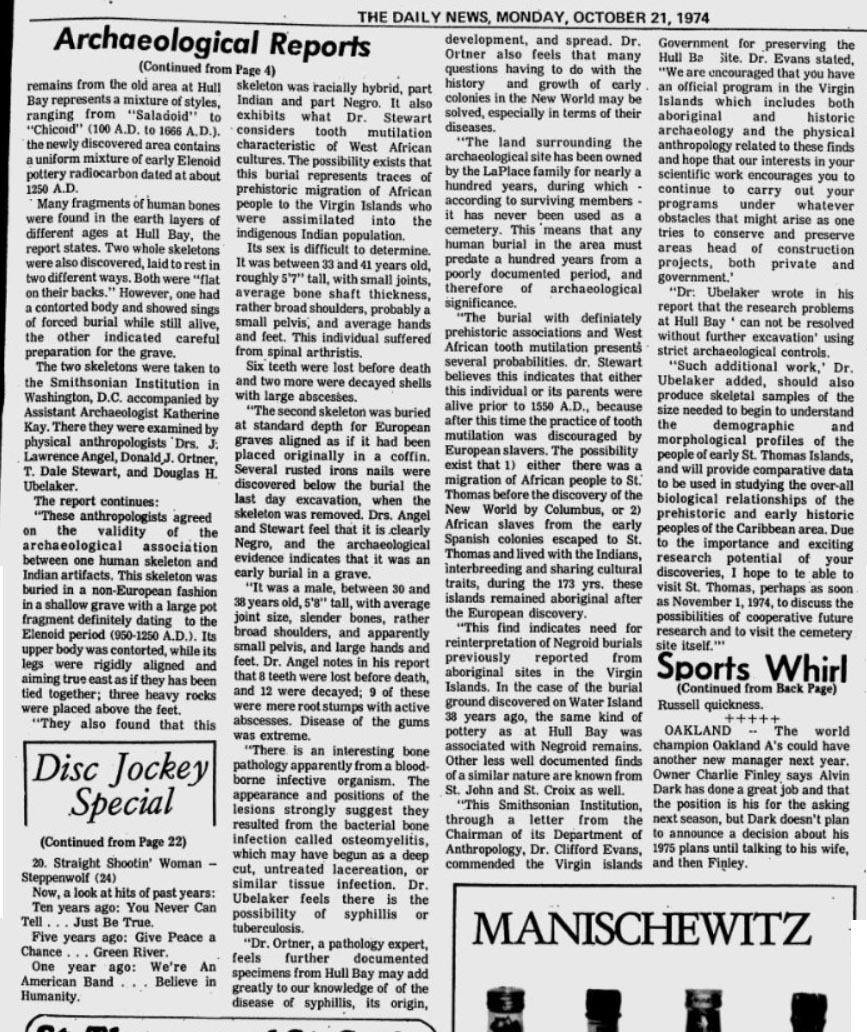
Spider, I found some counterpoints to the statements made in the article, that while the site contains many prehistoric indian remains, archeologists also determined that colonial burials had intruded upon the site.
Analysis of the Hull Bay Skeletons (PDF File)
Let's remember that the Atlantic slave trade was underway as early as the late 16th C. and touched the Caribbean Islands first.
a reply to: Hanslune
The article begins on page 3 and continues on page 23 in spider's link.
It reports that 'prehistoric' remains were found dating to around 100 AD, and appear to be a 'hybrid' of races - Native Indian and African Negroid.
Here's a screen cap of Spider's find:


Spider, I found some counterpoints to the statements made in the article, that while the site contains many prehistoric indian remains, archeologists also determined that colonial burials had intruded upon the site.
Analysis of the Hull Bay Skeletons (PDF File)
Let's remember that the Atlantic slave trade was underway as early as the late 16th C. and touched the Caribbean Islands first.
edit on
24-6-2014 by Blackmarketeer because: (no reason given)
Intrusion burials that penetrate earlier layers can often be mistakenly associated with the artifacts they have been placed next too. The boundary,
especially in sandy soils marking the refill is often hard to determine.....there is a specific word for this that escapes me at the moment!
Johnny Canuck where are you?
Johnny Canuck where are you?
a reply to: Blackmarketeer
Many thanks for reproducing that newspaper article.
A key point a single pottery fragment was found and not a smashed vessel, which raises the greater possibly of site disturbance, re use or disassociation. Ie the pottery vessel was not buried with the body
Many thanks for reproducing that newspaper article.
A key point a single pottery fragment was found and not a smashed vessel, which raises the greater possibly of site disturbance, re use or disassociation. Ie the pottery vessel was not buried with the body
"SIgh" thanks for the imput guys but I think this issue deserves it own thread... apologies to Kantz sorry for high jacking your wonderful
thread ,I initially thought the petroglyph and the burial maybe connected and may have some kinda connection with at-least the probable descendants of
of the Phoenicians who had links with Saharans,but more stuff kept popping up about the skeletons themselves.
Nuff respect Spider.
Nuff respect Spider.
edit on 24-6-2014 by Spider879 because: (no reason given)
Hello Guys and Gals if you don't mind pls take the discussions about the St. Vincent Skeletons here..Yorosiku onegaisimasu..
ST Vincent Skeletons A Case For Probable Old World New World Contact??
www.abovetopsecret.com...
ST Vincent Skeletons A Case For Probable Old World New World Contact??
www.abovetopsecret.com...
new topics
-
Maestro Benedetto
Literature: 4 minutes ago -
Is AI Better Than the Hollywood Elite?
Movies: 13 minutes ago -
Las Vegas UFO Spotting Teen Traumatized by Demon Creature in Backyard
Aliens and UFOs: 3 hours ago -
2024 Pigeon Forge Rod Run - On the Strip (Video made for you)
Automotive Discussion: 4 hours ago -
Gaza Terrorists Attack US Humanitarian Pier During Construction
Middle East Issues: 4 hours ago -
The functionality of boldening and italics is clunky and no post char limit warning?
ATS Freshman's Forum: 6 hours ago -
Meadows, Giuliani Among 11 Indicted in Arizona in Latest 2020 Election Subversion Case
Mainstream News: 6 hours ago -
Massachusetts Drag Queen Leads Young Kids in Free Palestine Chant
Social Issues and Civil Unrest: 6 hours ago -
Weinstein's conviction overturned
Mainstream News: 8 hours ago -
Supreme Court Oral Arguments 4.25.2024 - Are PRESIDENTS IMMUNE From Later Being Prosecuted.
Above Politics: 9 hours ago
top topics
-
Krystalnacht on today's most elite Universities?
Social Issues and Civil Unrest: 9 hours ago, 9 flags -
Supreme Court Oral Arguments 4.25.2024 - Are PRESIDENTS IMMUNE From Later Being Prosecuted.
Above Politics: 9 hours ago, 8 flags -
Weinstein's conviction overturned
Mainstream News: 8 hours ago, 7 flags -
University of Texas Instantly Shuts Down Anti Israel Protests
Education and Media: 12 hours ago, 6 flags -
Massachusetts Drag Queen Leads Young Kids in Free Palestine Chant
Social Issues and Civil Unrest: 6 hours ago, 6 flags -
Gaza Terrorists Attack US Humanitarian Pier During Construction
Middle East Issues: 4 hours ago, 6 flags -
Meadows, Giuliani Among 11 Indicted in Arizona in Latest 2020 Election Subversion Case
Mainstream News: 6 hours ago, 5 flags -
Las Vegas UFO Spotting Teen Traumatized by Demon Creature in Backyard
Aliens and UFOs: 3 hours ago, 3 flags -
2024 Pigeon Forge Rod Run - On the Strip (Video made for you)
Automotive Discussion: 4 hours ago, 2 flags -
Any one suspicious of fever promotions events, major investor Goldman Sachs card only.
The Gray Area: 14 hours ago, 2 flags
active topics
-
British TV Presenter Refuses To Use Guest's Preferred Pronouns
Education and Media • 164 • : Annee -
VP's Secret Service agent brawls with other agents at Andrews
Mainstream News • 56 • : CarlLaFong -
University of Texas Instantly Shuts Down Anti Israel Protests
Education and Media • 209 • : cherokeetroy -
Maestro Benedetto
Literature • 0 • : BrotherKinsMan -
Massachusetts Drag Queen Leads Young Kids in Free Palestine Chant
Social Issues and Civil Unrest • 11 • : marg6043 -
Electrical tricks for saving money
Education and Media • 7 • : chr0naut -
Definitive 9.11 Pentagon EVIDENCE.
9/11 Conspiracies • 424 • : Zanti Misfit -
Is AI Better Than the Hollywood Elite?
Movies • 0 • : 5thHead -
Las Vegas UFO Spotting Teen Traumatized by Demon Creature in Backyard
Aliens and UFOs • 8 • : Macenroe82 -
SHORT STORY WRITERS CONTEST -- April 2024 -- TIME -- TIME2024
Short Stories • 23 • : DontTreadOnMe
